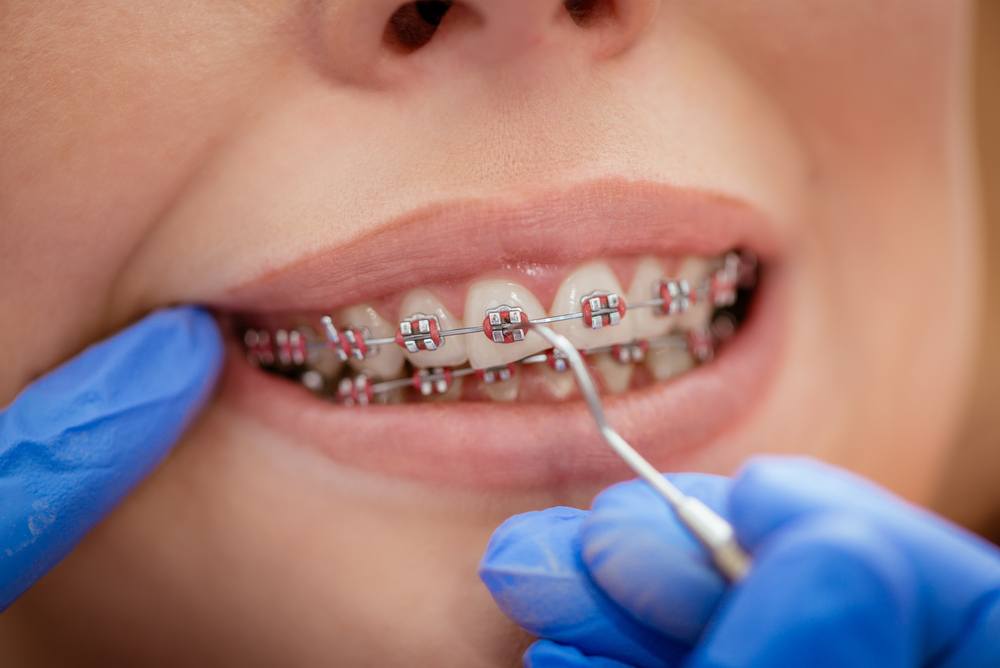What Establishes Cumming Braces and Aligners Besides Various Other Orthodontic Treatments
What Establishes Cumming Braces and Aligners Besides Various Other Orthodontic Treatments
Blog Article
Comprehensive Overview to Orthodontics Procedures for Fixing Dental Imbalances
Recognizing the ins and outs of each procedure, including their mechanisms, advantages, and possible drawbacks, is important in making educated decisions concerning one's orthodontic treatment. As we navigate via the detailed guide to orthodontic treatments for fixing oral misalignments, the complex information of each method will unfold, shedding light on the course toward a harmonious and practical dental placement.
Orthodontic Procedures Introduction

Along with conventional dental braces and clear aligners, orthodontists may also advise various other treatments like headgear, palatal expanders, or retainers to resolve particular positioning problems (orthodontist). These treatments are tailored per person's distinct needs and may involve a mix of treatments to attain the wanted outcomes. Regular changes and tracking are important parts of orthodontic therapy to guarantee progress gets on track and to make any kind of necessary alterations in the process. By undergoing orthodontic procedures, people can not just achieve a straighter grin but also improve their general dental wellness and function.
Typical Dental Braces: Exactly How They Work
When considering orthodontic therapies for dental imbalances, conventional dental braces attract attention as a time-tested approach for fixing teeth positioning. Conventional braces include braces, cables, and bands that collaborate to apply continuous pressure on the teeth, slowly relocating them right into the desired positioning. The braces are connected to the teeth making use of a special adhesive, and the cords are threaded through the brackets. By adjusting the stress of the wires, orthodontists can regulate the instructions and force related to each tooth, directing them right into appropriate placement gradually.
As stress is applied to the teeth via the braces, the bone surrounding the teeth is reshaped to support the brand-new tooth placements. Clients will need regular changes at the orthodontist's office to guarantee the dental braces continue to use the appropriate stress for reliable teeth activity.
Undetectable Aligners: Advantages And Disadvantages
These clear, customized trays are virtually unnoticeable when worn, making them an attractive option for people seeking a much more aesthetically pleasing orthodontic therapy. Patients can eliminate the aligners before consuming or brushing their teeth, decreasing the threat of food obtaining stuck in the device and simplifying the cleaning procedure.

Surgical Orthodontic Options
Surgical interventions in orthodontics present viable alternatives for addressing complex dental imbalances that may not be properly dealt with through standard orthodontic therapies. While unseen aligners and typical braces can fix lots of orthodontic issues, particular instances call for medical treatment to accomplish ideal results. Surgical orthodontic options are commonly suggested for extreme malocclusions, significant jaw inconsistencies, and situations where the underlying bone framework needs modification to achieve appropriate alignment.
One common medical orthodontic treatment is orthognathic surgical procedure, which involves repositioning the jaws to remedy functional issues such as difficulty speaking or chewing. This surgery is usually carried out in collaboration with an orthodontist that assists straighten the teeth before and after the treatment. Surgical orthodontics may likewise involve procedures to expose influenced teeth, get rid of excess periodontal cells, or reshape the jawbone to produce a more harmonious face profile.
Before considering surgical informative post orthodontic choices, clients undertake a thorough examination to determine the requirement and prospective advantages of such interventions. cumming orthodontist. While surgical treatment might seem difficult, it can significantly enhance both the feature and aesthetic appeals of the smile in instances where standard orthodontic therapies fail
Retainers and Post-Treatment Care

Failure to conform with post-treatment care directions can result in relapse, where check my site the teeth slowly move back towards their original placements. Constant retainer wear, great dental hygiene, and normal oral examinations are important for preserving the outcomes achieved through orthodontic surgical treatment and guaranteeing the lasting stability of the corrected dental alignment.
Conclusion
In verdict, orthodontic procedures use various alternatives for correcting oral misalignments. Surgical orthodontic alternatives are available for a lot more severe misalignments. On the whole, orthodontic procedures can properly improve oral health and aesthetic look.
As we navigate with the thorough guide to orthodontic procedures for dealing with dental misalignments, the detailed details of each technique will certainly unfold, shedding light on the course towards a harmonious and functional dental positioning. - cumming braces
One of the most common orthodontic treatments is the use of dental braces, which are composed of steel brackets and wires that apply mild stress to progressively shift teeth into the preferred setting.When thinking about orthodontic therapies for oral misalignments, traditional braces stand out as a tried and true technique for dealing with teeth placing. In addition, invisible aligners may not be appropriate for complicated orthodontic problems that call for even more substantial teeth activity, as they are typically recommended for mild to moderate cases. Retainers are customized orthodontic gadgets developed to hold teeth in their fixed settings after the completion of orthodontic treatment.
Report this page